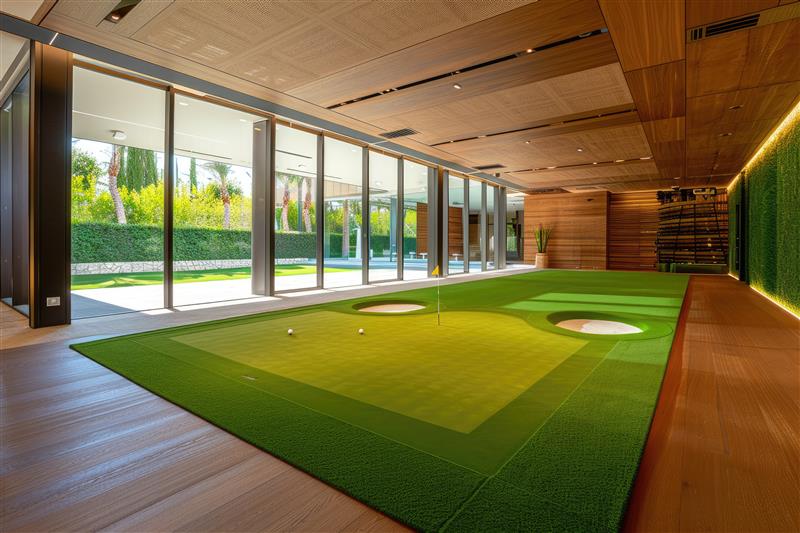
Golf is not just about the 18 holes anymore. In India, as the sport grows and player expectations rise, the demand for well-designed golf practice academies has surged. These dedicated spaces enhance player development, support junior golf programmes, and increase commercial viability for clubs. This blog explores the evolving role of golf course practise academy designers in India, and how their architectural insight is transforming underutilised areas into high-performance training hubs. From short-game areas to smart tech-enabled driving ranges, top golf designers like Vijit Nandrajog of Golf Design India are infusing innovation, efficiency, and purpose into academy layouts—elevating the standard for Indian golf facilities.
As golf becomes more accessible, there’s a growing need for structured practice spaces that go beyond a basic driving range. India’s new-age golfers—especially juniors and professionals—demand focused training zones, short-game practice bunkers, and multi-tee arrangements. Clubs have recognised that practice academies can drive engagement, membership, and revenue.
A quality practice academy is not defined by its size but by its design. The best academies offer variable-length tees, dedicated chipping and putting areas, well-designed bunkers, and real-game simulation spaces. Orientation, wind analysis, sunlight exposure, and surface undulation all matter. Golf course practice academy designers ensure that every square metre is used with intent and precision.
Designing a practice academy requires more than just plotting open space. It involves understanding player psychology, club logistics, and performance patterns. Top golf designer architects in India create layouts that enable repetition, refinement, and progression. They collaborate with coaches, turf experts, and equipment vendors to shape a seamless user experience.
Modern practice academies feature:
These features, guided by experienced golf designers, turn practice into performance.
Top golf consultants in India integrate tech like ball-tracking systems, launch monitors, and real-time data capture into academy plans. Turf science also plays a role—ensuring different grass types replicate game conditions. GDI’s team blends design with innovation, making academies future-ready and player-centric.
Around the world, leading academies like Butch Harmon School or IMG Golf Academy have set the standard. In India, Golf Design India has designed academies within club facilities and standalone real estate projects. Their practice zones have enhanced junior golf initiatives and attracted elite players looking for serious training grounds.
Well-designed academies generate non-member revenue, support corporate clinics, and serve as outreach centres for golf development. For real estate developers, integrated academies elevate project branding. For clubs, they increase daily footfall and engagement. For communities, they nurture local talent and open pathways to competitive golf.
Golf Design India, under the leadership of Vijit Nandrajog, is redefining academy design with functional artistry. Their practice zones are strategically shaped, ecologically responsible, and visually inspiring. As India builds its next generation of golfers, GDI ensures they have the best spaces to practise, learn, and thrive.
With rising interest in golf, practice academies support skill-building, youth training, and commercial opportunities. They offer structured spaces where players refine skills outside the full course.
It should include multiple tee levels, chipping zones, putting greens, practice bunkers, drainage, lighting, and optionally, indoor teaching tech. Good academy design mirrors real-course conditions.
Yes. Experienced golf course design firms like GDI create compact academies in real estate townships or club side lands, ensuring effective use of space without compromising experience.
Designers use varied difficulty levels, progressive zones, and simulate game pressure. They collaborate with coaches to ensure facilities cater to both beginners and professionals.
GDI’s experience spans integrated academies, real estate projects, and standalone facilities. Led by Vijit Nandrajog, their designs are player-first, efficient, and rooted in performance psychology.
